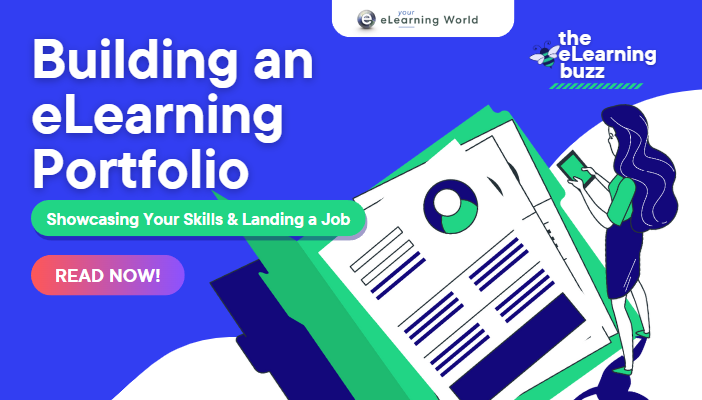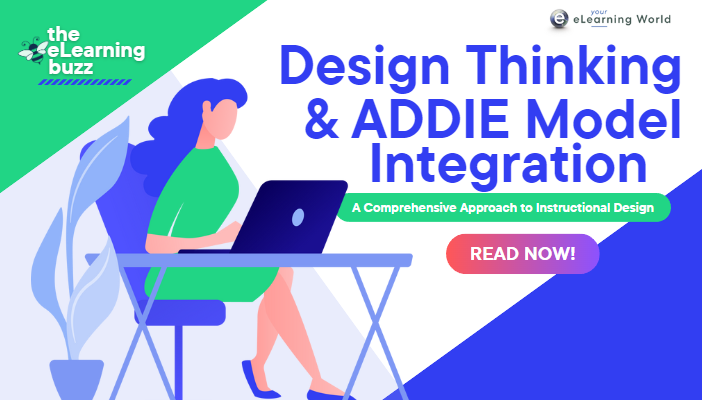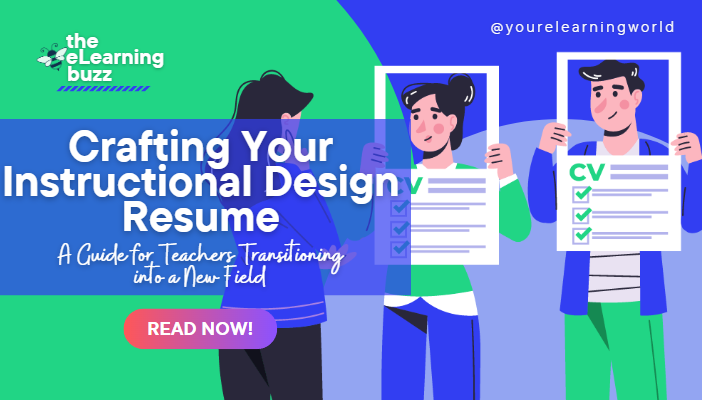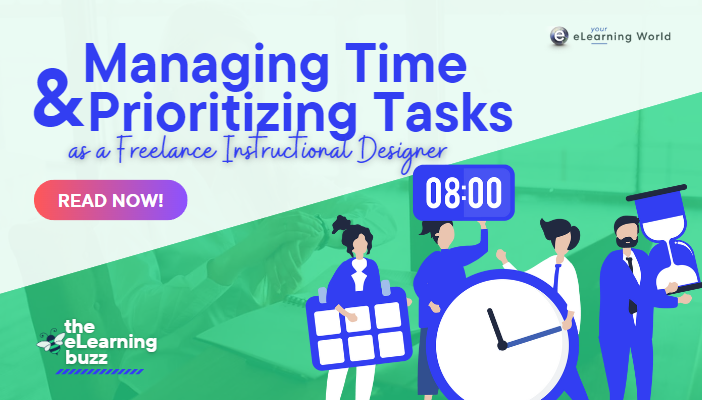As a teacher transitioning into instructional design, an impressive eLearning portfolio is one of the most powerful tools you can have in your arsenal. A well-crafted portfolio showcases your skills, expertise, and creativity in designing effective learning experiences. It serves as a tangible representation of your capabilities and provides potential employers with concrete evidence of your ability to create engaging and impactful eLearning content. In this article, we will explore the key elements of building an eLearning portfolio that can help you secure a job as an instructional designer. We will discuss the target audience, the types of projects to include, and how to effectively present your work. By the end of this article, you will have a clear understanding of how to create an eLearning portfolio that highlights your strengths and positions you as a qualified instructional designer. Defining Your Target Audience Before you begin building your eLearning portfolio, it … [Read more...] about Building an eLearning Portfolio for Instructional Design: Showcasing Your Skills and Landing the Job
The ELearning Course Designer’s Blog
Effective Strategies for Writing Engaging and Interactive eLearning Content
Writing engaging and interactive eLearning content is crucial for creating effective online learning experiences. To captivate learners and ensure knowledge retention, instructional designers must employ strategies that go beyond traditional text-based materials. In this article, we will explore effective techniques for writing eLearning content that grabs learners' attention, promotes active participation, and enhances their overall learning experience. By incorporating multimedia elements, utilizing interactive techniques, and crafting compelling narratives, you can create eLearning content that keeps learners engaged and facilitates effective knowledge transfer. Engaging Content Writing Techniques Storytelling Storytelling is a powerful technique for capturing learners' attention and making the content relatable and memorable. By incorporating narratives that connect with real-world scenarios and challenges, instructional designers can create a deeper emotional connection … [Read more...] about Effective Strategies for Writing Engaging and Interactive eLearning Content
Design Thinking and ADDIE Model Integration: A Comprehensive Approach to Instructional Design
Combining the ADDIE (Analysis, Design, Development, Implementation, Evaluation) model with Design Thinking can be a powerful approach to instructional design, as it brings together systematic planning and user-centric problem-solving. By leveraging the strengths of both methodologies, instructional designers can create innovative and impactful learning experiences. Let's explore the process of combining these two approaches in detail, along with examples to illustrate each step. Analysis and Empathy The Analysis phase of the ADDIE model involves gathering information about learners' needs, goals, and constraints. Design Thinking emphasizes empathy, which involves understanding users' perspectives and needs. By combining these two steps, instructional designers can gain deep insights into the learners' context and challenges. For example, let's consider a scenario where a company wants to develop a sales training program. In the Analysis phase, the instructional designer conducts … [Read more...] about Design Thinking and ADDIE Model Integration: A Comprehensive Approach to Instructional Design
Crafting Your Instructional Design Resume: A Guide for Teachers Transitioning into a New Field
As a teacher considering a transition into instructional design, you possess a wealth of valuable skills and experiences that can be effectively leveraged in this field. Making a successful career shift requires creating a well-crafted instructional design resume that highlights your teaching expertise and showcases your aptitude for instructional design principles. In this blog post, we will provide you, as a teacher, with a comprehensive guide on creating an effective instructional design resume that will truly impress potential employers. Showcasing Relevant Transferrable Skills Teachers inherently possess numerous transferable skills that can prove invaluable in the field of instructional design. These skills include curriculum development, lesson planning, classroom management, assessment design, and effective communication. When constructing your resume, it is essential to highlight these skills and emphasize their relevance to the instructional design field. Take the … [Read more...] about Crafting Your Instructional Design Resume: A Guide for Teachers Transitioning into a New Field
Managing Time and Prioritizing Tasks as a Freelance Instructional Designers
As a freelance instructional designer, you are no stranger to managing multiple projects, deadlines, and clients all while trying to maintain a healthy work-life balance. However, with so many tasks at hand, managing your time and prioritizing your workload can be overwhelming. In this article, we will explore some effective strategies that can help you manage your time and prioritize your tasks as a freelance instructional designer while minimizing stress. These strategies will help you stay on top of your workload and achieve your goals efficiently. 12 Expert Strategies to Manage Time and Prioritize Tasks 1. Set clear goals and priorities - To effectively manage your time and workload as a freelance instructional designer, it is crucial to set clear goals and priorities. Start by identifying your goals and objectives for each project, and break them down into smaller, manageable tasks. Once you have a list of all the tasks you need to complete, assign a priority level to each … [Read more...] about Managing Time and Prioritizing Tasks as a Freelance Instructional Designers
Transferable Skills for Teachers
Teaching and instructional design share many similarities, including the goal of creating effective learning experiences for learners. Therefore, it is no surprise that many teachers seek to transition into instructional design to expand their career opportunities and apply their skills in a new setting. With a bit of additional training in instructional design principles, teachers can transition into this field and bring their unique perspectives and expertise to create effective and engaging learning experiences for learners of all ages and backgrounds. 7 Skills and Experience Teachers can bring to the world of Instructional Design. 1. Curriculum development - one aspect of instructional design that teachers are already experts in. They have extensive experience in designing and delivering instructional materials, whether in the form of lesson plans, projects, or presentations. Teachers are skilled in creating engaging content that meets the needs of their students … [Read more...] about Transferable Skills for Teachers






